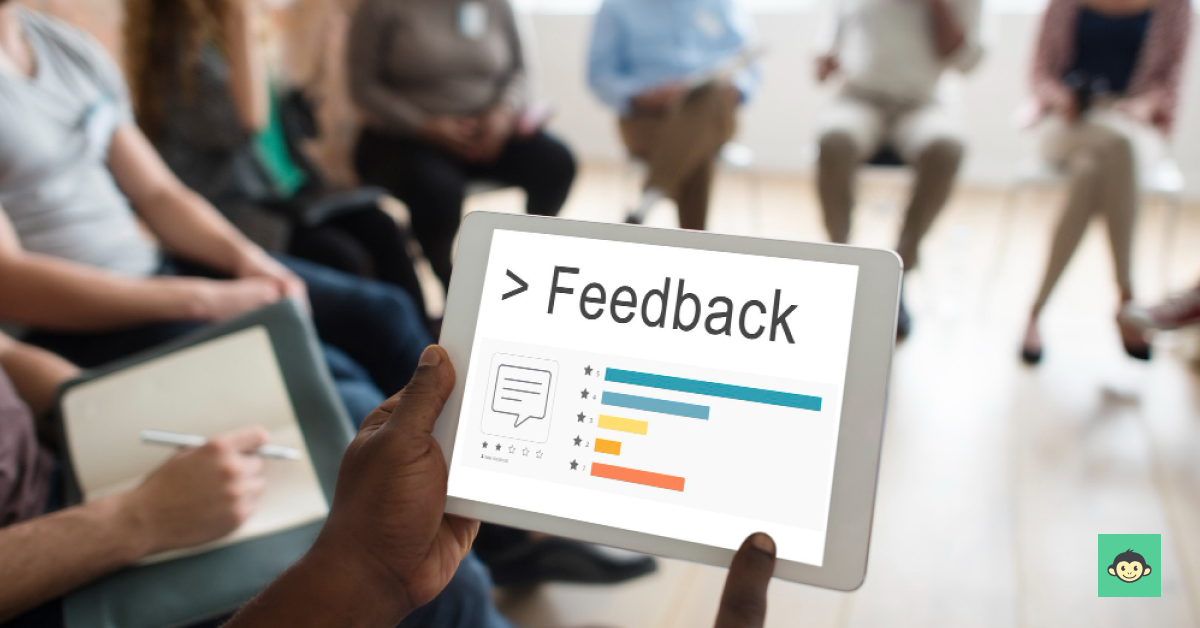How does anonymous employee survey work?

Imagine a scene where a mysterious cloak envelops your employees while giving their feedback, shielding their identity from prying eyes.
Like masked vigilantes, these employees can fearlessly express their thoughts, opinions, and concerns without the worry of consequences. This powerful mechanism empowers employees to contribute candidly, allowing organizations to address issues, strengthen engagement, and enhance the work environment.
Welcome to the world of anonymous employee surveys.
But how do these anonymous surveys actually work? What makes anonymity possible, and why does it matter?
In this article, we will delve into the biggest advantages of employee surveys, shedding light on their purpose, implementation, and the transformative impact they can have on organizational dynamics.
Table of contents:-
- Are employee anonymous surveys really anonymous?
- Do anonymous surveys get more responses?
- The importance of anonymous employee surveys
- Why using anonymous surveys in the workplace can improve engagement?
- Anonymous vs. confidential employee surveys
- 7 Tips for crafting the best anonymous survey template
- Top 13 anonymous employee survey questions
- What to do with the anonymous feedback survey results?
- Conclusion
- FAQs
Are employee anonymous surveys really anonymous?

Employee anonymous surveys are designed to provide a confidential means for employees to provide feedback without fear of reprisal or judgment. While efforts are made to maintain anonymity, it's important to understand that it varies from tool to tool. Here are some factors to consider:
Data collection and storage: When designing an anonymous survey, ensure that the data collection and storage methods do not capture personally identifiable information (PII) such as names, employee IDs, or email addresses. It's crucial to use a secure platform that protects the confidentiality of the respondents.
Survey administration: Take precautions during the survey administration process. For example, avoid distributing surveys through work email addresses, which may be traceable. Instead, use an independent third-party platform or utilize physical surveys that are collected and processed anonymously.
Data aggregation and reporting: When analyzing survey responses, aggregate the data to ensure individual responses cannot be traced back to specific individuals. Grouping responses by departments or other relevant demographics can help protect anonymity. Reporting should focus on trends and overall insights rather than individual responses.
Confidentiality assurances: Clearly communicate to employees that their survey responses will be treated confidentially and that their identities will not be disclosed. Provide reassurances that no negative consequences will result from their feedback and emphasize the importance of honest and constructive responses.
Trust and organizational culture: The effectiveness of anonymity depends on the level of trust within the organization. If employees have concerns about their feedback being traced back to them, they may hesitate to provide honest responses. Building a culture of trust and open communication can encourage employees to feel more comfortable participating in anonymous surveys.
While organizations strive to maintain anonymity, it's important to note that certain circumstances could potentially compromise anonymity. For instance, if a response contains highly specific information or circumstances that can be linked to a particular employee, it may be possible to deduce the source.
To further ensure employee trust and confidence, consider providing multiple channels for feedback, such as anonymous suggestion boxes, open-door policies, or confidential one-on-one conversations with HR representatives. This allows employees to choose the method they feel most comfortable with when sharing their concerns or suggestions.
Overall, while employee anonymous surveys aim to protect confidentiality, it's important for organizations to be transparent about the limitations and to foster a culture that values open and honest feedback regardless of the survey format.
Do anonymous surveys get more responses?

As you might imagine, the promise of anonymity holds the potential to encourage individuals to participate and share their honest thoughts without hesitation and does indeed get more responses!
When employees believe their responses cannot be traced back to them, they are more likely to provide honest employee feedback, which in turn can lead to a richer and more accurate data representation of the workforce's sentiments.
Here are a few reasons why anonymous surveys can attract more responses:
- Protection from bias or peer pressure: Anonymity helps mitigate the influence of social desirability bias or peer pressure. Employees may be more likely to provide feedback that aligns with their true experiences and opinions rather than conforming to perceived expectations or norms.
- Safety to voice dissenting opinions: Anonymous surveys create a safe environment for employees to express dissenting opinions or raise sensitive issues. They may feel more empowered to highlight problems, challenges, or areas for improvement without the fear of facing repercussions or being singled out.
- Enhanced participation and engagement: When employees believe their voices are being heard and their opinions matter, they are more motivated to participate in surveys. Anonymous surveys can contribute to a sense of inclusivity, encouraging broader participation from employees who may otherwise hesitate to share their thoughts openly.
The importance of anonymous employee surveys

As we showed you above, with the proven ability to evoke higher response rates and foster more honest employee feedback, it becomes increasingly clear that an anonymous employee survey plays a pivotal role in understanding the true pulse of an organization. Now, let's explore the importance of these surveys in greater detail.
Encouraging honest feedback
Anonymity is the key that unlocks the door to candid employee feedback.When employees have the assurance that their identities will not be revealed, they feel more comfortable expressing their true thoughts and experiences. This allows organizations to access unfiltered insights, gaining a genuine understanding of employee perspectives, concerns, and suggestions.
Uncovering hidden issues
Employees may hesitate to voice their concerns openly due to fear of judgment, retaliation, or simply not feeling heard. An anonymous employee survey can provide a safe space for individuals to disclose issues that might otherwise go unnoticed.
By shining a light on hidden challenges, organizations can address underlying problems and improve the work environment for everyone.
Supporting data-driven decision making:
By collecting employee feedback from a diverse range of employees through anonymous surveys, organizations gather a wealth of data that can inform decision-making processes. These insights provide a clearer understanding of employee needs and concerns, allowing organizations to make informed choices that align with their workforce's interests.
Strengthening trust and transparency:
Implementing anonymous employee surveys demonstrates an organization's commitment to fostering a culture of trust and transparency. When employees see their feedback being valued and acted upon, it enhances their confidence in the organization's leadership and their belief that their voices matter.
Why using anonymous surveys in the workplace can improve engagement?

Using anonymous surveys in the workplace is like providing employees with a secret superpower that boosts their engagement! Below, we share a few reasons why anonymous surveys can make a positive difference:
Safe and trusting space
Picture a cozy nook where employees can comfortably share their thoughts without worrying about any negative consequences. An anonymous employee survey can create that safe haven, allowing employees to be open and honest without fear of judgment or reprisal. This builds trust and makes employees feel valued, leading to increased engagement.
Authentic employee feedback
When employees know their identities are shielded, they can let their ideas and opinions flow freely! With anonymous employee surveys, you'll get a treasure trove of genuine feedback.
All voices welcome
With anonymous surveys, every employee gets a chance to shine. Regardless of their role or position, everyone has an equal opportunity to participate and have their voice heard. This inclusivity empowers employees, making them feel like valued contributors to the organization's success and boosting their overall engagement.
Unveiling hidden gems
With anonymity, employees feel more comfortable sharing those ideas or concerns they might hesitate to express openly. You'll discover hidden gems that might have otherwise remained untapped. By giving employees a platform to speak up without reservation, you'll uncover innovative solutions, untangle challenges, and unlock new possibilities.
Actionable insights for growth
Anonymous surveys provide a map of actionable insights. Armed with honest feedback, you can identify areas that need attention, address employee concerns, and make meaningful changes.
So, embrace the power of anonymous surveys in your workplace!
Anonymous vs. confidential employee surveys

Now that we've explored the benefits of anonymous surveys, it's worth diving into the distinction between anonymous and confidential surveys. While both approaches aim to protect employee identities, they differ in handling the survey data.
Anonymous surveys ensure complete anonymity, with no personally identifiable information collected. Survey administrators cannot trace responses back to specific individuals, offering employees the highest level of protection and freedom to express their opinions.
Confidential surveys, on the other hand, collect respondent information for administrative purposes but keep it separate from the survey responses. Access to this information is limited to authorized personnel. While confidentiality is maintained, employees may have slight concerns about their identities indirectly being deduced based on the collected data.
The choice between anonymous and confidential surveys depends on organizational goals, trust levels, and legal requirements. It's vital to communicate openly with employees, ensuring they feel secure in knowing that their responses will be treated with utmost care and used solely for their intended purposes.
7 Tips for crafting the best anonymous survey template

Crafting an effective anonymous employee survey template requires careful thought and consideration. Here are seven tips to help you create the best survey template:
Clear and concise questions
Keep your survey questions straightforward, concise, and easy to understand. Avoid jargon or technical terms that could confuse respondents.
Cover a range of topics
Include a diverse range of relevant topics in your survey, covering areas like job satisfaction, communication, work-life balance, career development, and organizational culture. This helps gather comprehensive feedback and address different aspects of the employee experience.
Use a balanced mix of question types
Incorporate different types of questions, such as multiple-choice, Likert scale, ranking, and open-ended questions. This variety keeps the survey engaging and provides different avenues for employees to express their opinions.
Ensure anonymity throughout the survey
Reiterate the anonymous nature of the survey at the beginning and throughout the survey. Assure employees that their responses will be kept confidential and their identities will not be revealed. This encourages honest and candid feedback.
Avoid biased or leading questions
Phrase your questions in a neutral and unbiased manner. Avoid leading or suggestive language that could influence respondents' answers.
Provide room for additional comments
Include an open-ended question at the end of the survey to allow employees to provide additional comments or feedback. This gives them an opportunity to express thoughts that may not have been captured by the previous questions. These comments can offer valuable insights and suggestions for improvement.
Test and refine the survey
Before launching the survey to the entire organization, conduct a pilot test with a small group of employees. Gather feedback on the clarity of the questions, survey length, and overall user experience. Based on the feedback received, make necessary refinements to ensure the survey is clear, relevant, and user-friendly.
Top 13 anonymous employee survey questions

Now that we’ve discussed enough about the best practices in conducting anonymous employee surveys, let’s jump into some must ask anonymous questions you should be asking to your employees in their next pulse survey.
Overall job satisfaction:
- On a scale of 1-10, how satisfied are you with your current job?
- What are the primary factors influencing your job satisfaction?
Employee engagement:
- Do you feel engaged in your work and connected to the company's goals and mission?
- What motivates you to perform at your best?
Communication and feedback:
- How would you rate the effectiveness of communication within the organization?
- Do you feel comfortable providing feedback and suggestions without fear of negative consequences?
Recognition and rewards:
- Do you feel adequately recognized and appreciated for your contributions?
- Are the rewards and recognition programs fair and meaningful?
Work-life balance:
- Do you feel you have a healthy work-life balance?
- Are there sufficient resources and support to manage your workload effectively?
Career development:
- Do you believe there are opportunities for growth and advancement within the company?
- Are you satisfied with the support and opportunities provided for your professional development?
- How satisfied are you with the opportunities for career growth and advancement within the company?"
What to do with the anonymous feedback survey results?

Once you have collected the anonymous feedback survey results, it's crucial to take action to address the insights and suggestions provided by your employees. Here are some steps to consider:
- Analyze the data: Review the survey responses and identify patterns, trends, and areas of concern. Look for both positive feedback and areas that require improvement.
- Prioritize key themes: Identify the key themes that emerge from the survey results. Focus on areas that have the most significant impact on employee satisfaction, engagement, and organizational effectiveness.
- Share results and action plan: Communicate the survey results with your employees, ensuring confidentiality and anonymity are maintained. Share an overview of the survey participants' key findings and the steps you plan to take based on the feedback received.
- Develop actionable engagement strategies: Develop a comprehensive action plan based on the survey results. Prioritize areas for improvement and set clear goals and objectives. Assign responsibilities and establish timelines for implementing changes.
- Involve employees: Involve employees in the improvement process by seeking their input and participation. Encourage open dialogue and collaboration to find effective solutions and address concerns raised in the survey.
- Implement changes: Execute the action plan by implementing the identified strategies and initiatives. Monitor progress regularly and make adjustments as needed.
- Communicate progress: Keep employees informed about the progress made and the changes implemented as a result of the survey feedback. Regularly update them on the actions taken and the impact of those actions
- Repeat the survey: Conduct regular anonymous employee surveys to track company progress, measure the effectiveness of implemented changes, and identify any new areas of concern. This allows for ongoing feedback and continuous improvement.
Conclusion

CultureMonkey's anonymous feedback tool ensures absolute anonymity and privacy for all employee touchpoints. With our anonymous employee engagement surveys, you can enable your employees to voice their opinions. Our GDPR-compliant anonymous survey tool provides complete data security for employee responses and a feature—Anonymous feedback chat within the platform where you can respond to your employees’ feedback.
In short, CultureMonkey’s secure employee engagement platform offers end-to-end anonymity, customizable survey questions, and over 50 customizable employee survey templates, making setting up surveys quick and easy to increase your survey response rates, reduce answer bias, and ensure data accuracy.
FAQs about anonymous employee surveys
What is anonymous feedback?
Anonymous feedback refers to feedback provided by individuals without disclosing their identities. It allows employees to share their thoughts, opinions, and concerns openly without the fear of repercussions.
How to collect anonymous feedback?
To collect anonymous feedback, you can use various methods for such surveys such as online survey tools, suggestion boxes, or third-party platforms. Ensure that the feedback collection process does not reveal the identities of participants and that the responses remain confidential.
What are the benefits of anonymous feedback?
Anonymous feedback provides several benefits, including:
- Encouraging honesty and openness from employees.
- Creating a safe environment for sharing sensitive or critical feedback.
- Reducing fear of retaliation or judgment.
- Promoting equal participation and inclusion.
- Gaining insights into the true sentiments of the workforce.
Is anonymous feedback more honest?
Anonymous feedback often encourages more honest and genuine responses. When employees feel their identities are protected, they are more likely to provide candid feedback, address concerns, and share their true opinions.
Should employee feedback be anonymous?
Employee feedback can benefit from being anonymous as it can encourage more open and honest responses, particularly when addressing sensitive or critical issues.



